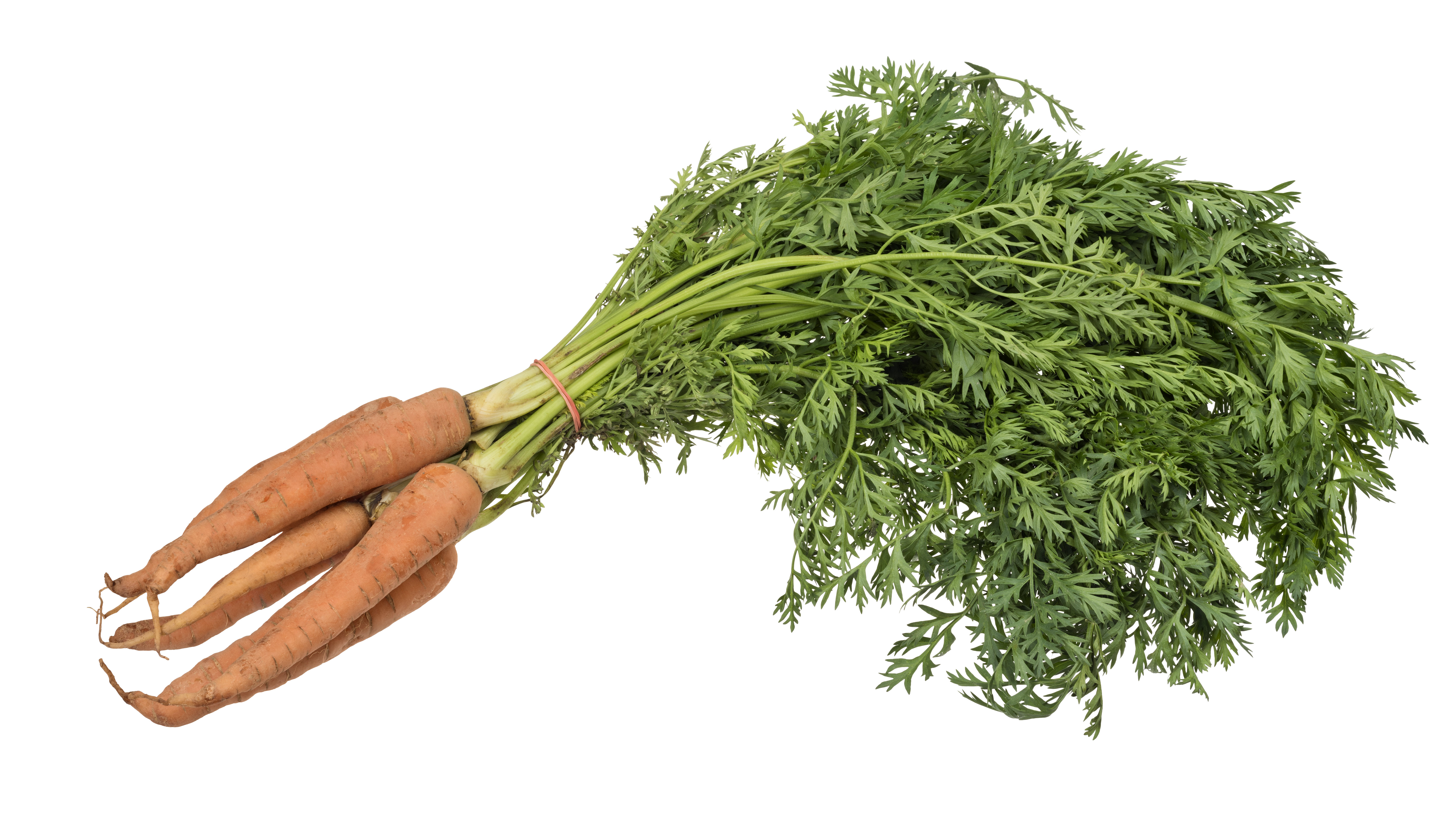Description
Carrots are a root vegetable that is grown from seed. It normally grows an expanded root one year and then forms a flower the next year. It can grow up to 60 cm high and spread to 50 cm wide. The root is long in shape and orange in colour. The stem is erect, tough and furrowed. The leaves are feathery and divided 3 times. The flowers are white and lacy.
Planting requirements
Planting season: Can be planted from September to February in the up-country regions, and from October to January in the mid-country regions.
Planting conditions:
| Propagation | They are grown from seeds sown directly. Seed germinate well in the temperature range 7–24°C. |
|---|---|
| Planting method | Seeds can be mixed with sand before sowing to allow a more even distribution of plants. A spacing of 5 cm apart in rows 15–20 cm apart is suitable. Often this spacing is achieved by thinning out excess plants. direct seeding and raised beds for better drainage during rainy seasons |
| Soil | Requires deep, loose soil with a pH of 6-7. Soil should be well-drained and rich in organic matter |
| Water | Consistent moisture is essential and light, frequent irrigation during root enlargement is crucial |
| Light | Carrots require six to eight hours of direct sunlight a day. Providing afternoon shade or planting in filtered light can give carrots the amount of light they need while keeping soil temperatures lower during the hottest part of the day. In hot climate, shade netting or intercropping with taller plants can help protect carrots from excessive heat |
Growing conditions:
| Temperatures | Plants grow well with a temperature about 15°C |
|---|---|
| Soil | Root vegetables grow faster in loose, loamy, or sandy soils. To lighten heavy soil in carrot beds, incorporate sand, low-nitrogen compost, wood shavings, shredded leaf mulch, or chopped straw. Avoid adding animal manures as these are often nitrogen-rich |
| Water | Daily watering is required to maintain the moisture in the soil. Therefore, provide light, frequent irrigation to obtain good yield |
| Pruning | Not necessary |
| Weed control | Hand-pulling or hoeing |
Harvesting
Large Carrots can be harvested in 12-18 weeks.
Curing
Cure by keeping carrots in a cool, humid place for 2-3 weeks to improve flavour and texture.
Storage
Store carrots in the refrigerator crisper drawer for up to 4 months. Alternatively, they can be frozen or canned. Where refrigeration may not always be available, carrots can be stored in cool, dark places or processed into pickles for longer preservation.
Protecting your plants
Pest control
Pest type:
- Leaf miner (Liriomyza huidobrensis)
- Black cut (worm-Agrotis spp)
- Root knot Nematode (Meloidogyne spp.)
- Slug and Snail
Symptoms:
Leaf miner: Spotted appearance on foliage. Larvae make irregular mine and result drying and withering of leaves. Damaged plants may succumb to secondary infection by late blight.
Black cut: These nocturnal pests create round holes in young leaves, later cutting plants at the base near the ground and damaging shoots. They pull plant stems below the surface, causing several plants to wilt during the day, and leave unsightly holes in the tubers.
Root knot Nematode:
- Yellowing
- Stunting
- Wilting
- Uneven growth
- Uproot tubers can be observed
- Galls on feeder roots
- Forking of the tap root
- Bunching of roots
Slug and Snail: Destroy seedlings at the emergence. Damage is severe during high rainfall conditions.
Control method:
Leaf miner:
- Regular field inspection
- Yellow colour sticky trap
- Covering crops with suitable material prevent mitigating flies
- Removal of other host plants surrounds the crop field
- Removal and distruction of infected plant material
- Encourage naturally found parasitoids; Hemiptarsenus semibiclavas and Opius spp
Black cut:
- Regular monitoring
- Hand collecting and destroying
- Weed management
- Proper field sanitation
- Plough the soil deeply to bring the larvae and pupa to the surface of the soil
- Encourage predatory birds to prey the worms during tillage.
Root knot:
- Block entry of pests into fields.
- Avoid moving plants and soil from infested areas.
- Prevent irrigation water from infested fields from reaching clean areas.
- Thoroughly clean tools before use.
- Till the soil two to three times and expose it to sunlight.
- Apply poultry manure two weeks before planting.
- Practice crop rotation to disrupt pest life cycles.
Slug and Snail:
- Eliminate daytime sheltering spots for snails.
- Regularly trap and remove snails from the field.
- Remove debris and maintain proper field sanitation.
- Implement effective weed management.
- Encourage predatory birds by enhancing their natural habitats.
Disease Control
Disease type:
- Blight
- Soft rot
Symptoms: Wilted leaves, yellowing or browning leaves, lesions on roots
Management:
Blight:
- Use of healthy seeds
- Field sanitation
Soft rot:
- Field sanitation
- Improve drainage condition in the field
Sources
In addition to our General List of Sources (link), we used these specific references:
